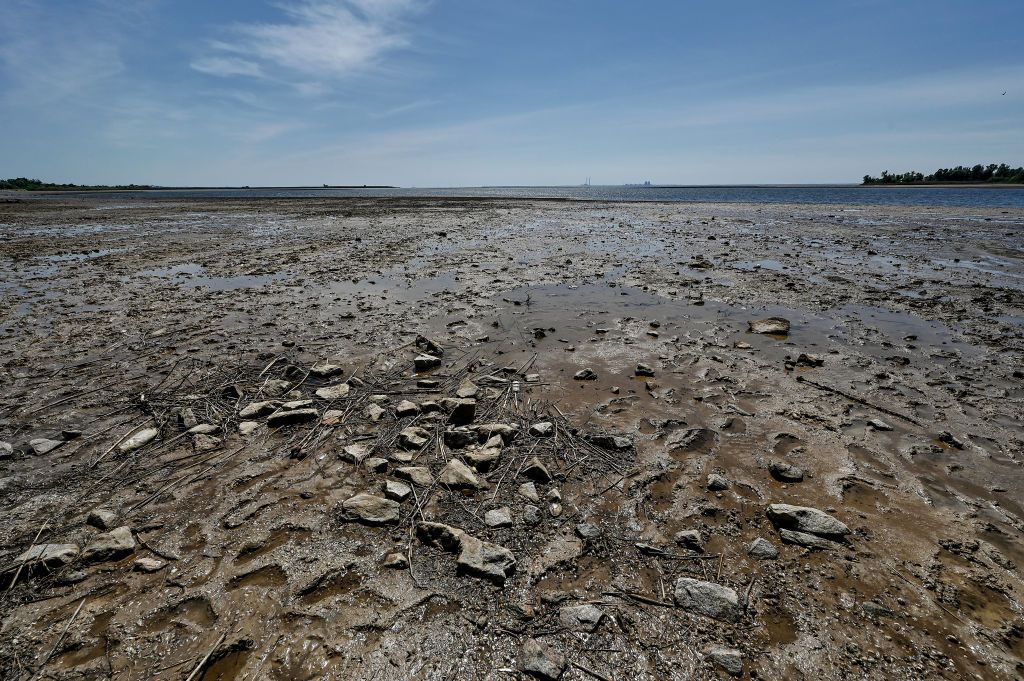Ukrhydroenergo head: Kakhovka dam destruction cut off water supply to Crimea for 'at least a year'.
Four Ukrainian oblasts will have problems with water supply and water will not flow to Crimea from the Kakhovka reservoir for "at least a year" due to the Kakhovka dam's destruction, head of Ukrainian state-owned energy company Ukrhydroenergo Ihor Syrota told[1] Radio Svoboda on June 12. "There is no water supply to Crimea because the water level in the Kakhovka reservoir is already much lower than what is needed to go along the Crimean Canal. Therefore, most likely, water will not flow to Crimea for at least a year," Syrota explained.
The North Crimean Canal, blocked by Ukraine following Russia's 2014 illegal annexation of Crimea and reopened last year when Russia invaded Ukraine and seized the canal, supplied around 85% of the peninsula's water before 2014. The Kakhovka dam collapsed[2] early on June 6, resulting in a mass-scale humanitarian[3] and ecological disaster[4] in Kherson Oblast and other parts of southern Ukraine. Ukrainian authorities say the dam was blown up by Russian forces to prevent a Ukrainian counter-offensive.
The effects of the dam's destruction will likely be felt for years to come. According to Syrota, the ongoing Russian occupation of Crimea complicates the possibility of supplying the peninsula with water by other possible means. Dnipropetrovsk, Kherson, Mykolaiv, and Zaporizhzhia oblasts will also have problems with water supply.
Alternatives are being considered to circumvent the issue, especially regarding the supply of clean drinking water, Syrota added. The Infrastructure Ministry said[5] on June 7 that it had allocated Hr 1.5 billion (£40 million) to construct water pipelines and restore centralized water supply to areas impacted by the Kakhovka dam disaster.
Kakhovka dam destruction disrupts water, power supply but offers sustainable reset In the early morning of June 6, Russia blew up a major dam in the occupied part of southern Ukraine, causing a humanitarian and ecological crisis.
The Kakhovka dam, located on the Dnipro River, is a major waterway running through southeastern Ukraine and the last of a series of six
 [6]
[6]  Kate Tsurkan
Kate Tsurkan
News editor
Kate Tsurkan is a news editor at the Kyiv Independent. She is a writer, editor, and translator. Her work has been published in The New Yorker, Vanity Fair, Harpers, The Washington Post, and elsewhere.
She is the co-founder of Apofenie Magazine.
Originally from the U.S., she resides in Chernivtsi, a city in the west of Ukraine.
References
- ^ told (www.youtube.com)
- ^ collapsed (kyivindependent.com)
- ^ humanitarian (kyivindependent.com)
- ^ ecological disaster (kyivindependent.com)
- ^ said (kyivindependent.com)
- ^ Kakhovka dam destruction disrupts water, power supply but offers sustainable resetIn the early morning of June 6, Russia blew up a major dam in the occupied part of southern Ukraine, causing a humanitarian and ecological crisis.
The Kakhovka dam, located on the Dnipro River, is a major waterway running through southeastern Ukraine and the last of a series of six
(kyivindependent.com)